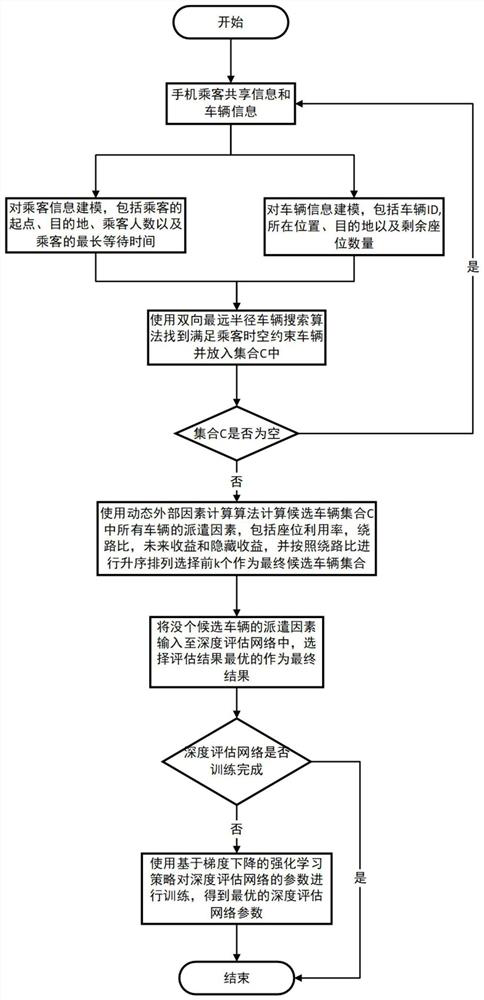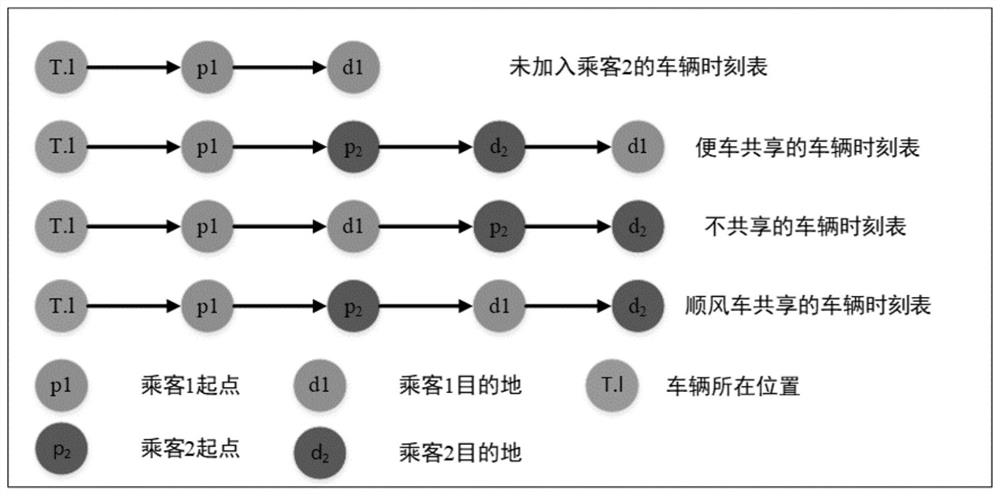Vehicle sharing service order dispatching method and system based on reinforcement learning
A reinforcement learning and vehicle sharing technology, applied in the field of vehicle sharing, can solve problems such as unplanned vehicle routes, too strict requirements on passenger locations, and no specific consideration of vehicle detour distances, etc., to achieve maximum benefits and efficiency, and large time constraints globalization, energy conservation and environmental protection
- Summary
- Abstract
- Description
- Claims
- Application Information
AI Technical Summary
Problems solved by technology
Method used
Image
Examples
Embodiment Construction
[0056] The technical solution will be described in detail below in conjunction with the accompanying drawings and embodiments.
[0057] The embodiment of the present invention provides a shared service order dispatching system based on reinforcement learning. Firstly, according to the passenger's time constraints, a candidate vehicle that satisfies the passenger's time and space constraints is found, and then the dispatch factors between each candidate vehicle and the current passenger are calculated, including the detour ratio. , the seat utilization rate, the hidden income and future income of the vehicle, and then input the vehicle to the deep evaluation network for evaluation to obtain the optimal candidate vehicle and return the result, and use the reinforcement learning strategy based on gradient descent to train the deep evaluation network. The detailed realization of embodiment comprises the following steps:
[0058] Step1, continuously collect passenger request inform...
PUM
 Login to View More
Login to View More Abstract
Description
Claims
Application Information
 Login to View More
Login to View More - R&D
- Intellectual Property
- Life Sciences
- Materials
- Tech Scout
- Unparalleled Data Quality
- Higher Quality Content
- 60% Fewer Hallucinations
Browse by: Latest US Patents, China's latest patents, Technical Efficacy Thesaurus, Application Domain, Technology Topic, Popular Technical Reports.
© 2025 PatSnap. All rights reserved.Legal|Privacy policy|Modern Slavery Act Transparency Statement|Sitemap|About US| Contact US: help@patsnap.com



